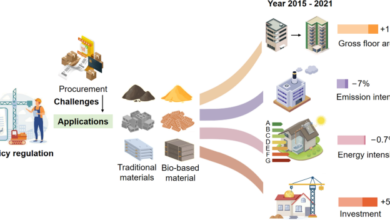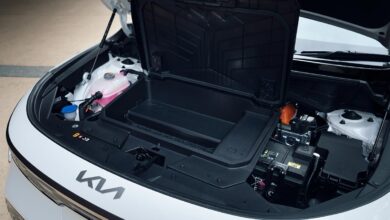Getting a Solar Farm on Your Land: Steps and Considerations

Starting a solar farm on your land is a complex yet rewarding venture that requires careful planning and consideration. First, you’ll need to assess your land’s suitability through environmental impact assessments, soil analysis, and a study of the topography. Next, navigating the maze of legal and regulatory requirements, including permits and zoning regulations, is crucial. Financial planning, such as exploring grants and tax incentives, comes next, followed by selecting the right technology tailored to your goals. Finally, establishing a robust maintenance and monitoring plan ensures long-term success. So, where should you begin this intricate journey?
Assessing Land Suitability
Assessing land suitability is the critical first step when considering getting a solar farm on your land or property. You need to evaluate a few key factors to ensure your land is ideal for solar energy production.
Start by conducting a thorough environmental impact assessment. This assessment will help you understand how the solar farm may affect local wildlife, vegetation, and water resources. It’s essential to minimize negative impacts while maximizing energy output.
Next, perform a detailed soil analysis. Soil composition affects the installation and long-term stability of solar panels. Check for soil compatibility with the required foundations and ground mounts. Poor soil conditions can lead to increased installation costs and potential structural issues down the line. Additionally, consider the soil’s drainage capabilities to prevent water accumulation around the panels, which could affect their efficiency.
You should also examine the topography and orientation of your land. Optimal land should be relatively flat and unobstructed by trees or buildings to ensure maximum sunlight exposure. By meticulously assessing these factors, you can strategically plan your solar farm, ensuring both efficiency and sustainability. Taking these steps will set a solid foundation for your solar energy project.
Legal and Regulatory Requirements
Once you’ve confirmed your land’s suitability, you must navigate the complex landscape of legal and regulatory requirements. Begin by familiarizing yourself with the local zoning regulations. Zoning laws will dictate whether your land can legally host a solar farm. Check with your local planning department to ensure your property is zoned for such a use. You might need to apply for a zoning variance or special use permit if it’s not already permitted.
Next, dive into the permitting process. You’ll need several permits before breaking ground. This typically includes building permits, electrical permits, and environmental impact assessments. Each of these permits requires thorough documentation and adherence to specific standards. It’s crucial to consult with a legal expert or a consultant specializing in renewable energy projects to ensure you meet all requirements.
Additionally, engage with local utility companies early in the process. They’ll need to approve your project’s grid connection, which involves technical assessments and compliance with their standards.
Financial Planning and Funding
When planning a solar farm, robust financial planning and securing funding are crucial steps to ensure your project’s viability. Start with clear budgeting strategies to estimate your initial and ongoing costs. Factor in expenses like land preparation, installation, maintenance, and utility interconnections. Accurate budgeting will help you avoid surprises and keep your project on track.
Next, explore grant opportunities that can significantly offset your upfront costs. Various federal and state programs offer grants for renewable energy projects. Research and apply for those that align with your project’s scale and location.
Loan options are another essential consideration. Many financial institutions offer loans specifically tailored for renewable energy projects. Compare interest rates, terms, and conditions to choose the most favorable option.
Don’t overlook the substantial tax incentives available for solar installations. The federal Investment Tax Credit (ITC) allows you to deduct a significant percentage of your solar project costs from your federal taxes. State and local tax incentives can further enhance your financial outlook.
Choosing the Right Technology
Navigating the landscape of solar technology is pivotal to the success of your solar farm. You need to start with a thorough technology selection process. Understanding the different solar panel options is crucial.
- Monocrystalline panels offer high efficiency and durability but come at a higher cost.
- Polycrystalline panels are less efficient but more budget-friendly.
- Thin-film panels are flexible and lightweight, making them suitable for varying terrains, though they generally offer lower efficiency.
Consider the specific needs of your land. Is space a constraint? Monocrystalline might be your best bet. Do you need to cover a large area on a tight budget? Polycrystalline could be more suitable. For unique landscapes, thin-film panels might be the ideal choice.
Don’t overlook the importance of inverters. Choosing between string inverters, microinverters, and power optimizers can significantly impact your farm’s efficiency and ease of maintenance.
- String inverters are cost-effective, while microinverters and power optimizers provide better performance monitoring and flexibility.
Carefully weigh each option against your financial and operational goals. This strategic approach to technology selection ensures that your solar farm will operate efficiently and meet your long-term objectives.
Maintenance and Monitoring
Proper maintenance and monitoring are crucial for the long-term success of your solar farm. To ensure optimal performance, you need to implement a robust routine maintenance schedule. This includes regular cleaning of solar panels to remove dust and debris, which can significantly impact efficiency.
You’ll also want to inspect wiring, inverters, and mounting structures periodically to preempt any potential issues.
Remote monitoring is an invaluable tool in your strategic plan. By leveraging advanced software, you can track the performance of each panel in real-time. This technology allows you to quickly identify and address any underperforming units, thus maximizing your energy output.
Many remote monitoring systems also offer predictive maintenance capabilities, alerting you to potential problems before they become critical.
It’s essential to have a skilled maintenance team or a reliable service contract with a professional company. They should be well-versed in the specific technology you’ve chosen for your solar farm. Regularly updating your monitoring software is another key aspect, ensuring you always have access to the latest features and security patches.
Conclusion
In conclusion, setting up a solar farm on your land isn’t just about harnessing the sun’s power—it’s a strategic investment. By thoroughly assessing land suitability, navigating legal requirements, securing funding, and choosing the right technology, you’re laying the groundwork for success. Don’t forget the importance of a robust maintenance plan to ensure long-term efficiency. This meticulous approach not only maximizes energy output but also solidifies your role in a sustainable future.
Keep an eye for more news & updates on UsaTechMagazine!





